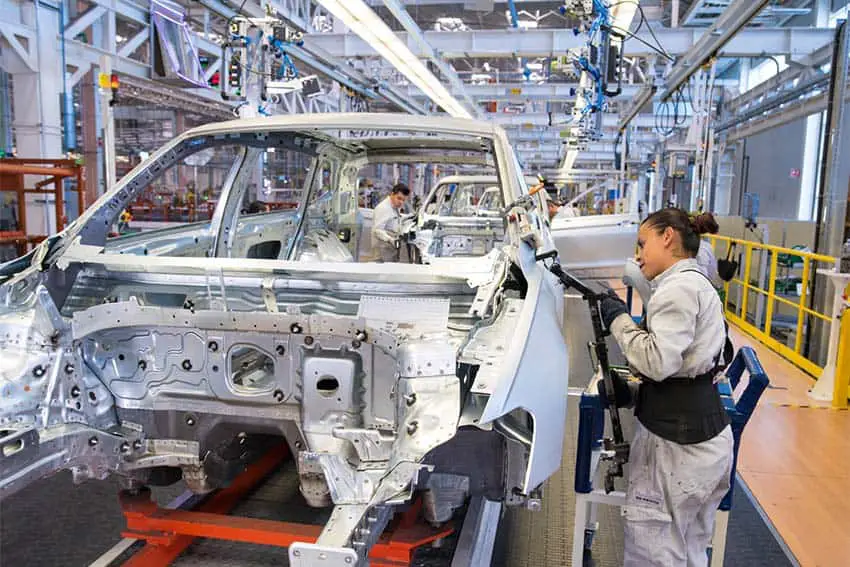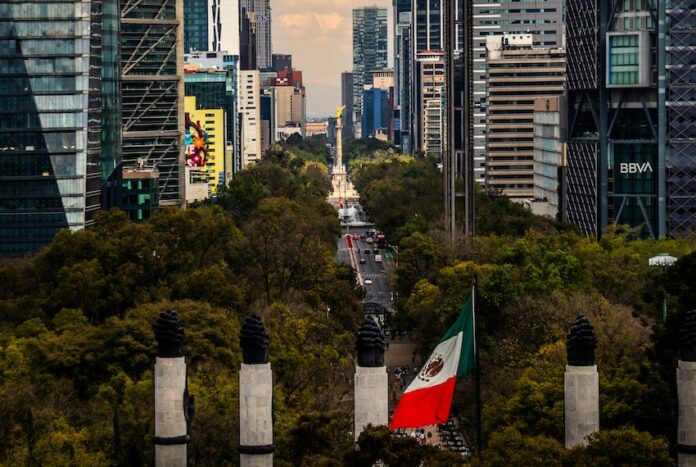Trump’s tariffs and accelerating trends in robotics and AI should be a wake-up call for Mexico.
Part 2: Why is a rethink of the Mexican economy necessary?
Part 3: What could a rethink of the Mexican economy look like?
The purpose of this three-part series is to reflect on the emerging trends of trade protectionism (tariffs), AI and robotics, consider the potential impacts on Mexico and foster a discussion on possible solutions. Please share your thoughts in the comments section and let’s have an inspiring and engaging discussion and debate.
Part 2: Why is a rethink of the Mexican economy necessary?
Mexico’s economy has become increasingly reliant on the manufacturing sector, and its manufacturing sector is extremely reliant on the United States.
How reliant? Nearly 80% of everything that Mexico makes is exported to the U.S…80%!!! Over 80% of vehicles produced in Mexico go to the U.S….87% of the auto parts….80% of the aerospace products….86% of the electronics.
Now, imagine for a moment that the U.S. can increasingly produce more of its own goods. Imagine that advances in artificial intelligence and robotics make it increasingly possible to produce goods with significantly fewer people.
It might sound improbable given the past 30 years, but what if it isn’t going forward? What would be the impact on Mexico and its workforce? Given this risk, what should Mexico do? What can Mexico do?
Approximately 25% of all formally employed Mexicans, nearly 14 million people, are employed in the manufacturing sector. On average, 50% of the Foreign Direct Investment in Mexico in a given year is in the manufacturing sector. Imagine for a moment the impact on the economy and society if there were even slight changes to those numbers.
So what kind of rethink does Mexico’s economy need?
To begin to answer those questions, let’s first step back and remember the key components of the Mexican economy. I will simplify the analysis to keep it easier to explain.
About 30% of Mexico’s GDP is related to manufacturing and industry. Tourism makes up 9%; remittances 4%; agriculture 3%; oil 2%. The other roughly half of the economy is linked to other components of the Service Sector.
As mentioned previously, nearly 80% of Mexican-manufactured goods are exported to the United States. Tourists from the United States make up over 70% of the international visitors each year to Mexico. Approximately 78% of Mexico’s agricultural exports go to the United States. Nearly all of the remittances come from the United States.
Mexico is the country most dependent on another country in the world. A common expression, attributed to former President Porfirio Díaz, is “Poor Mexico, so far from God and so close to the United States.”
Many people I talk to suggest that Mexico needs to begin to try to reduce its dependence on the U.S. They suggest that Mexico should look south to markets in Central and South America. Or develop closer ties to Europe. Or develop a deeper relationship with China. I think that this thinking is flawed for a number of reasons:
- No country consumes like the United States. There simply is no one else in the neighborhood of the Americas that buys even close to what the U.S. does.
- Many other countries, especially the larger economies of South America and Europe, have a demographic problem. Their birthrates are declining, their populations are aging. In short, it will be a long time before they return to being “high consumption” economies that Mexico could sell manufactured goods to.
- China has an overproduction problem and trade deficits with nearly everyone. It seems highly unlikely that Mexico would be able to grow its economy by selling to Chinese consumers.
- Protectionism is on the rise. With declining populations, slowing GDP growth, increasing supply chain concerns, and increasing nationalism, I don’t see any other significant opportunity elsewhere for Mexico to sell its manufactured goods.
As a result, I think that Mexico needs to unequivocally accept that its fate is tied to that of the United States, for better or for worse, and for the long term foreseeable future.
The country also needs to recognize that its growth model as a low-cost supplier of manufactured goods to the United States might increasingly be at risk. Even if the “America First” tariff threats quiet down, the rapidly increasing trends of robotics and AI in manufacturing likely mean much less employment in this sector — potentially in just a few years if many experts are to be believed.

Mexico must urgently begin to rethink what will be its key economic drivers going forward. This is not in any way to say that manufacturing will no longer be important.
Mexico must continue to move up the value chain in manufacturing to continue to maintain and grow investment and employment in this sector. But it seems increasingly unlikely that manufacturing will be the growth and employment generation engine for the economy that it has been in the past.
The country must start by leveraging the many strengths it has in this increasingly uncertain world. To name a few:
- Geographic proximity to the U.S.
- Relative low cost of living
- Relative low cost of labor
- Excellent weather
- Service-oriented culture
- Deep culinary traditions and history
- Deep cultural traditions and history
Taking into account those strengths and others, and with the risk that the manufacturing sector is not the employment and economic engine of the past, Mexico needs to begin to invest in different (non-manufacturing) sectors to further diversify its economy and continue to provide employment and economic growth for its people.
Each of these areas will require a step change in thinking, focus, and investment from the public and private sectors from what we have historically seen. The evolution to less dependence on manufacturing as an engine of economic growth and employment will take time, and success in each of these areas is far from guaranteed. But I strongly believe that by proactively redirecting, prioritizing, accelerating and incentivizing investment into the following areas, Mexico can better control its own destiny.
They are as follows:
- Tourism
- Health care delivery
- Senior care
- Housing/living for expats
- Food
- Wellness
- Infrastructure to support all of the above
In Part 3 of this series, I will explore each of these areas, why I think each is important, and how Mexico could thrive in each of them. The third and final part of the series will be in tomorrow’s MND.
Travis Bembenek is the CEO of Mexico News Daily and has been living, working or playing in Mexico for nearly 30 years.
